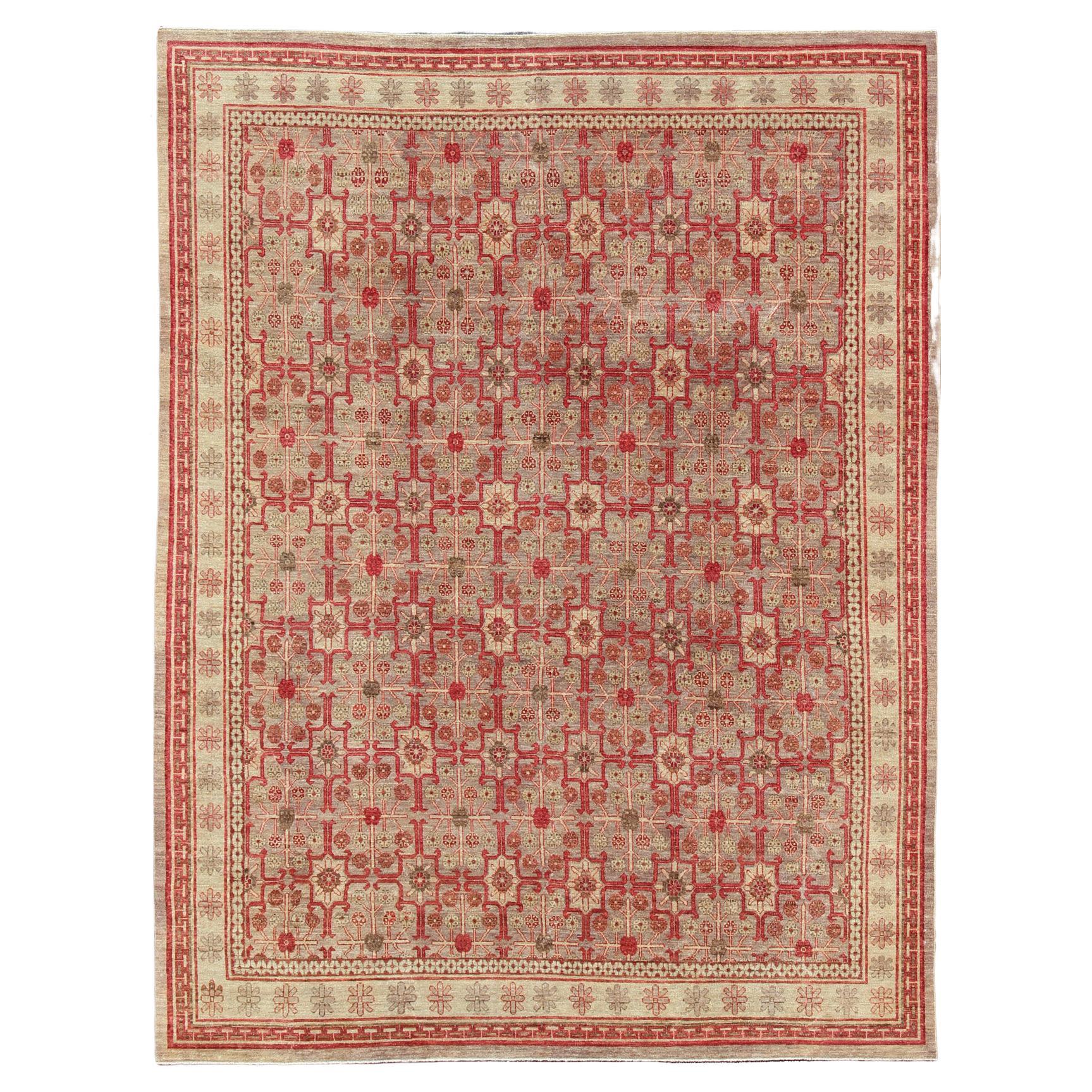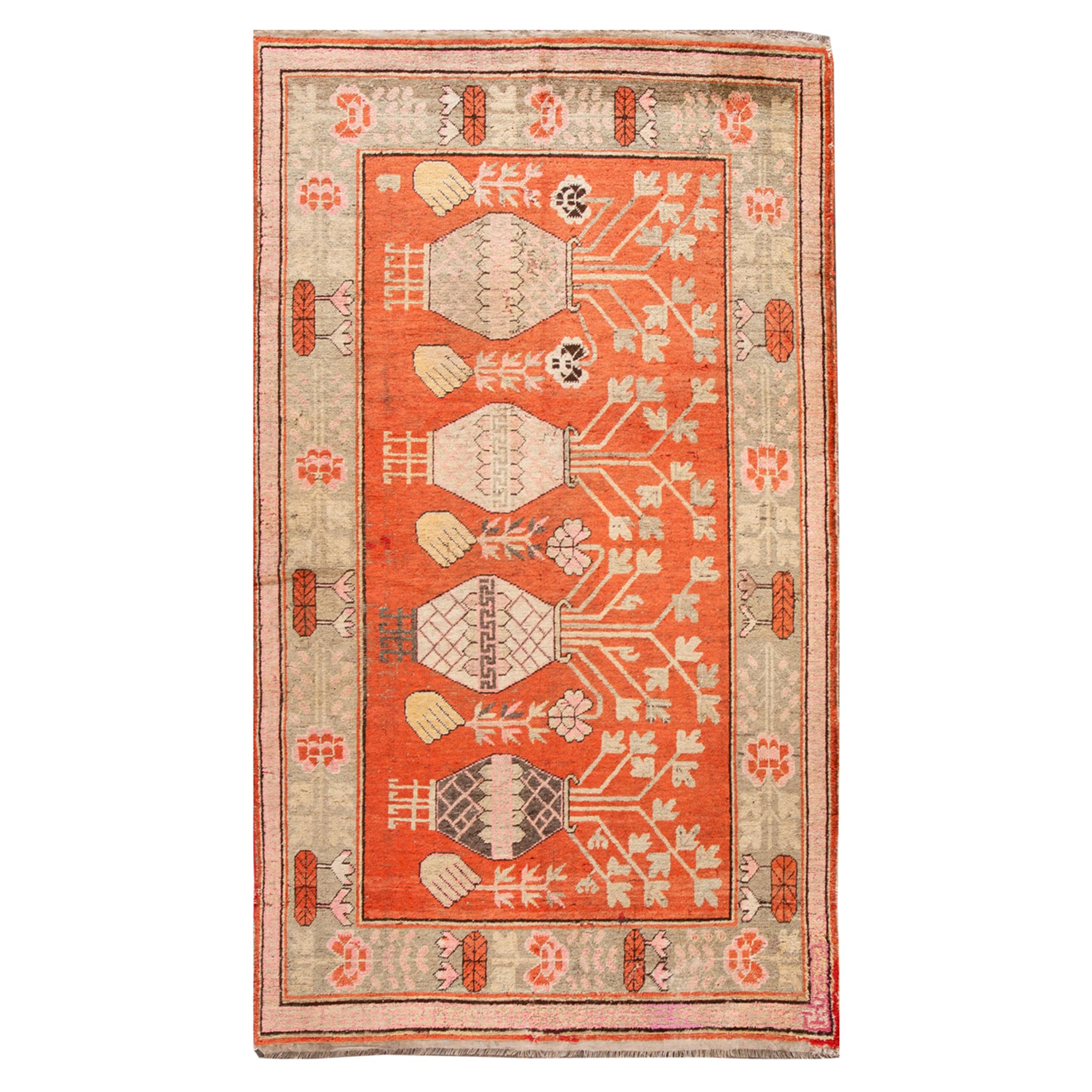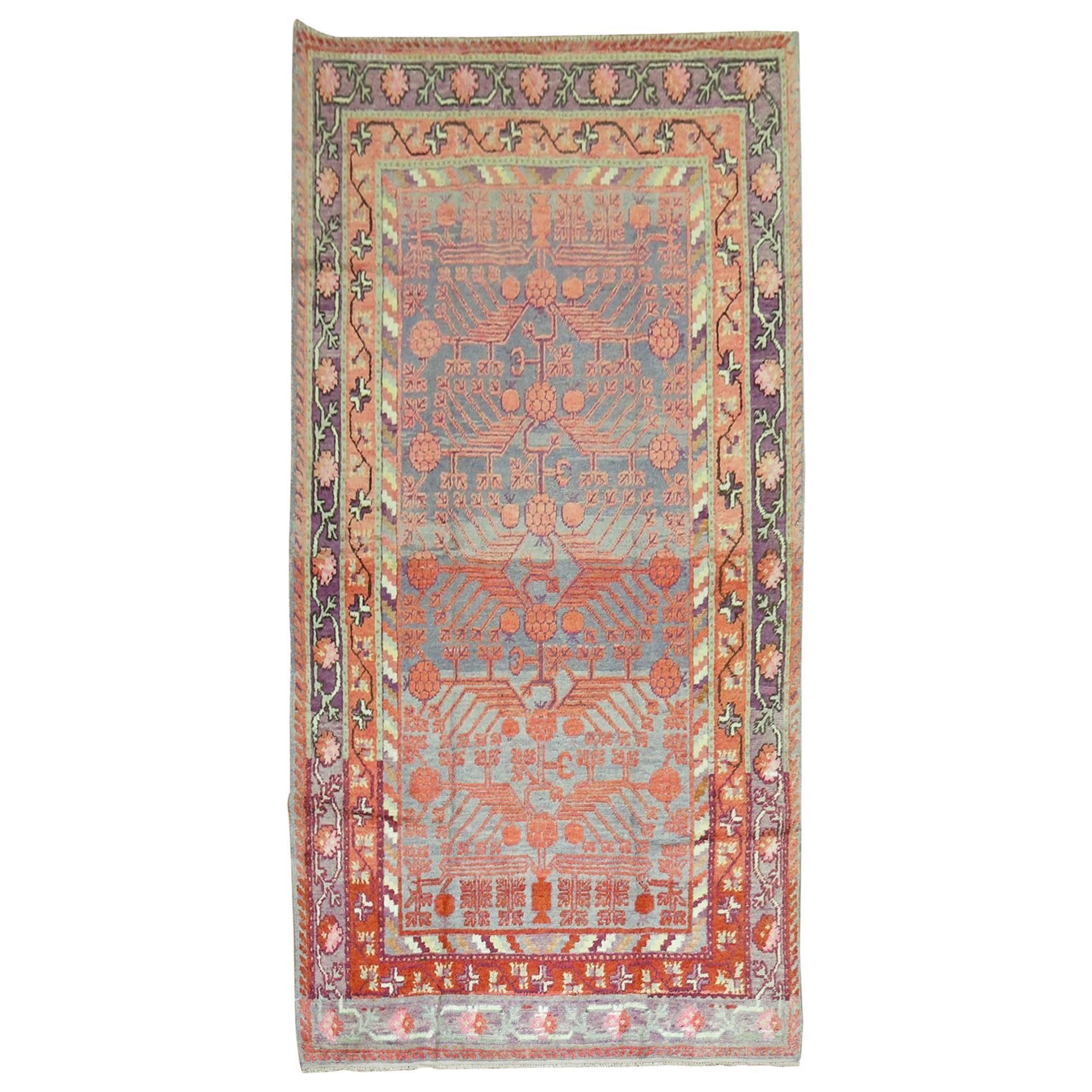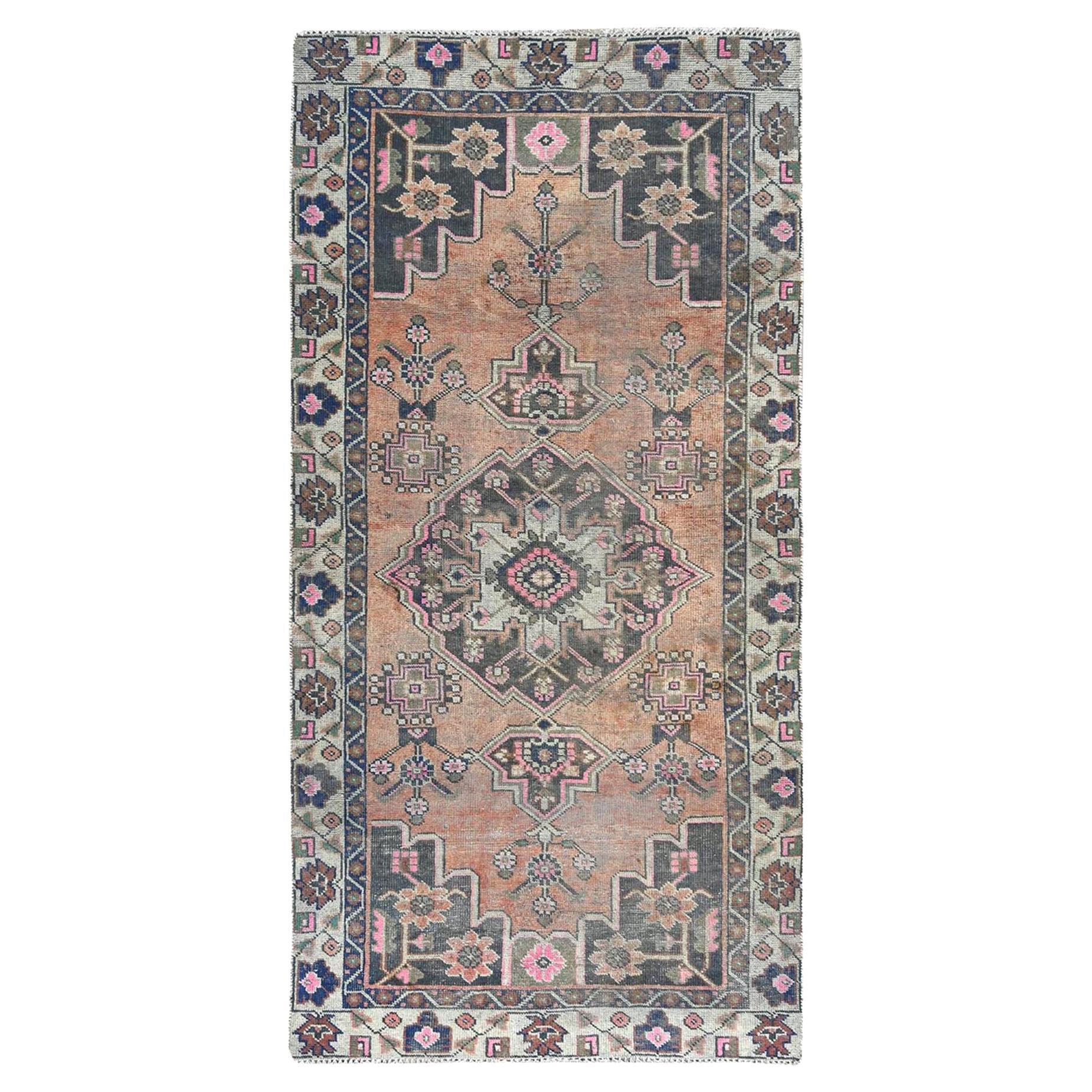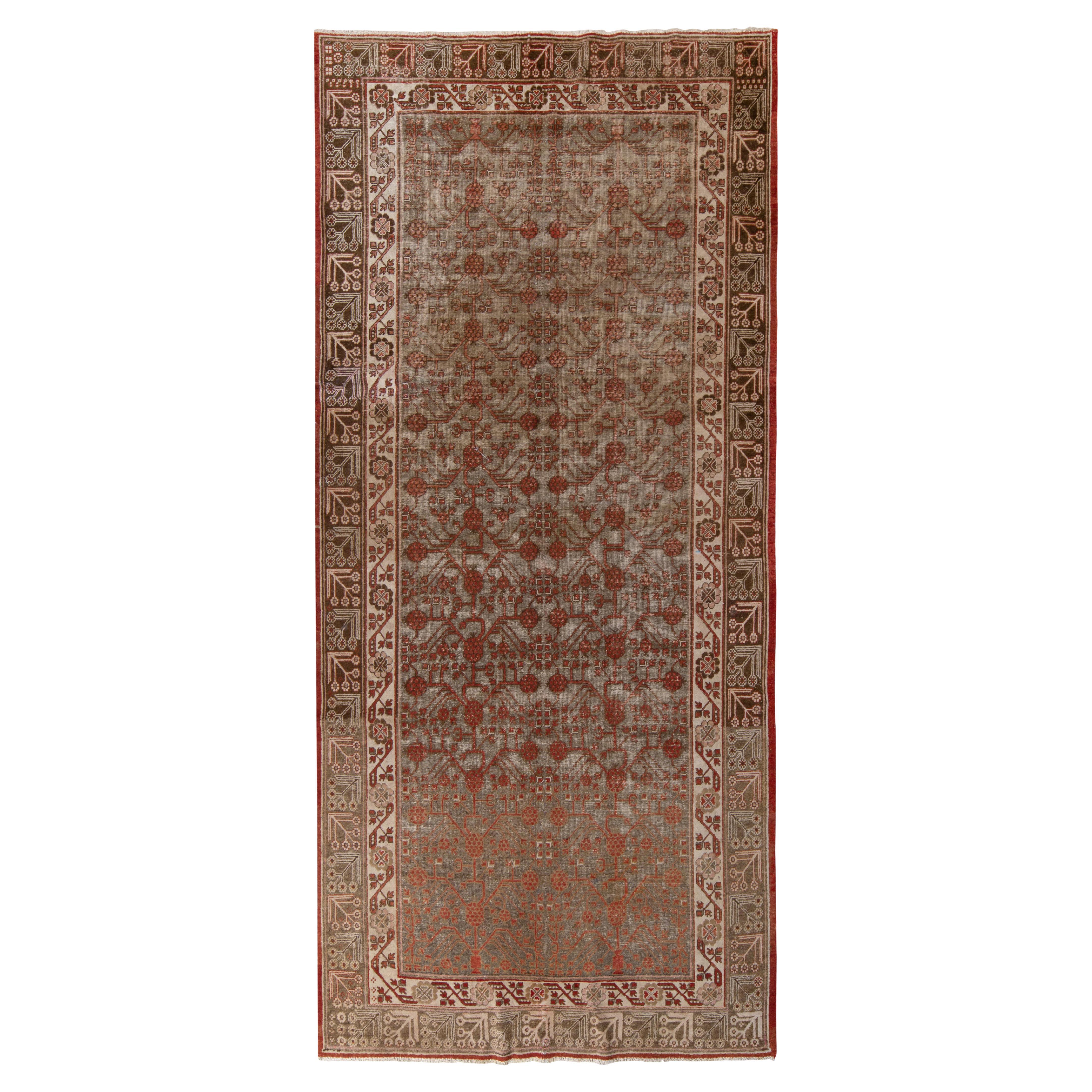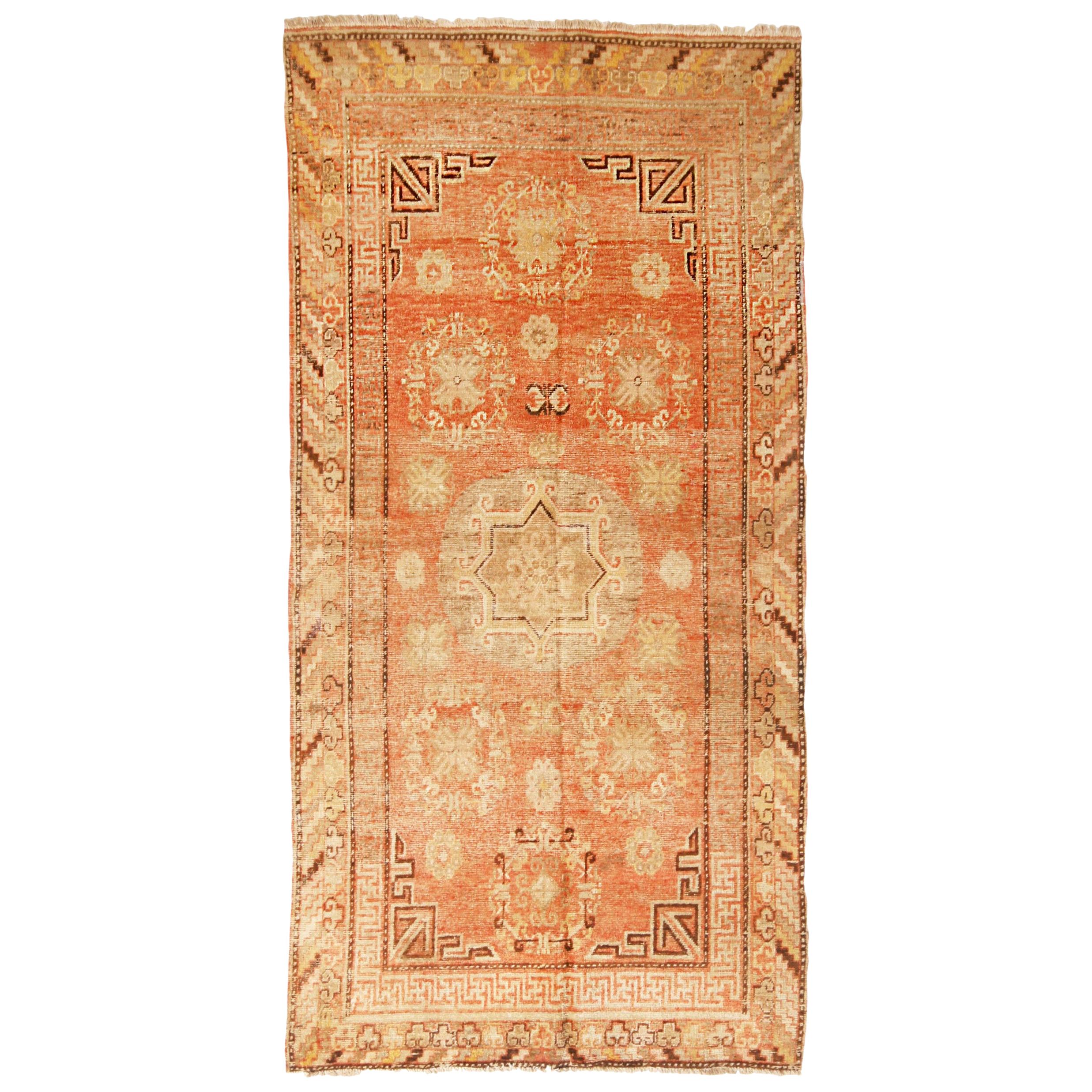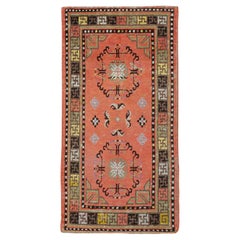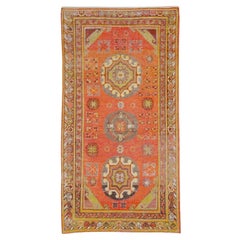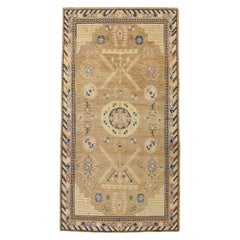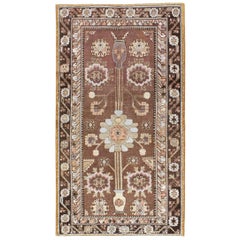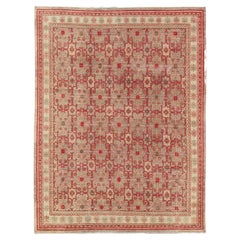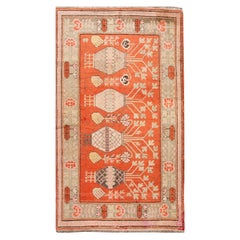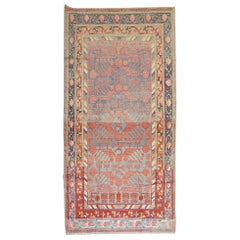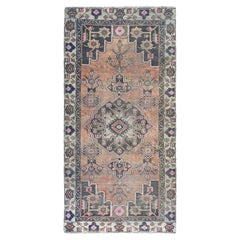Items Similar to Early 20th Century Handmade Khotan Scatter Rug in Coral and Grey
Want more images or videos?
Request additional images or videos from the seller
1 of 9
Early 20th Century Handmade Khotan Scatter Rug in Coral and Grey
$2,080
$2,60020% Off
£1,597.99
£1,997.4820% Off
€1,836.07
€2,295.0920% Off
CA$2,925.78
CA$3,657.2220% Off
A$3,286.98
A$4,108.7320% Off
CHF 1,717.45
CHF 2,146.8220% Off
MX$40,119.13
MX$50,148.9120% Off
NOK 21,806.63
NOK 27,258.2820% Off
SEK 20,526.34
SEK 25,657.9320% Off
DKK 13,701.43
DKK 17,126.7920% Off
About the Item
An antique East Turkestan Khotan 2' x 3' scatter/throw rug handmade during the early 20th century in shades of coral and grey.
- Dimensions:Width: 25 in (63.5 cm)Length: 47 in (119.38 cm)
- Style:Modern (In the Style Of)
- Materials and Techniques:Wool,Hand-Knotted
- Place of Origin:
- Period:
- Date of Manufacture:circa 1920
- Condition:Wear consistent with age and use. This rug is in its original coloration.
- Seller Location:New York, NY
- Reference Number:Seller: 218421stDibs: LU88236853383
About the Seller
5.0
Platinum Seller
Premium sellers with a 4.7+ rating and 24-hour response times
Established in 1989
1stDibs seller since 2009
596 sales on 1stDibs
Typical response time: <1 hour
- ShippingRetrieving quote...Shipping from: New York, NY
- Return Policy
Authenticity Guarantee
In the unlikely event there’s an issue with an item’s authenticity, contact us within 1 year for a full refund. DetailsMoney-Back Guarantee
If your item is not as described, is damaged in transit, or does not arrive, contact us within 7 days for a full refund. Details24-Hour Cancellation
You have a 24-hour grace period in which to reconsider your purchase, with no questions asked.Vetted Professional Sellers
Our world-class sellers must adhere to strict standards for service and quality, maintaining the integrity of our listings.Price-Match Guarantee
If you find that a seller listed the same item for a lower price elsewhere, we’ll match it.Trusted Global Delivery
Our best-in-class carrier network provides specialized shipping options worldwide, including custom delivery.More From This Seller
View AllEarly 20th Century East Turkestan Khotan Throw Rug
Located in New York, NY
An antique East Turkestan Khotan throw rug. The salmon-pink field of this lively small scatter from the Xinjiang oasis city of Khotan displays two wiry, openwork octagons in dark bro...
Category
Early 20th Century East Turkestani Khotan Chinese and East Asian Rugs
Materials
Wool
Early 20th Century Handmade East Turkestan Khotan Accent Rug
Located in New York, NY
An antique East Turkestan Khotan accent rug handmade during the early 20th century.
Measures: 4' 9" x 8' 11"
Category
Early 20th Century East Turkestani Rustic Central Asian Rugs
Materials
Wool
Early 20th Century Handmade Khotan 5' x 9' Light Brown Gallery Rug
Located in New York, NY
An antique East Turkestan Khotan gallery rug handmade during the early 20th century with a predominately light brown neutral field.
Measures: 5' 0" x 9' 4"
Category
Early 20th Century East Turkestani Khotan Chinese and East Asian Rugs
Materials
Wool
Early 20th Century Handmade East Turkestan Khotan Gallery Accent Rug
Located in New York, NY
An antique East Turkestan Khotan accent rug in gallery format handmade during the early 20th century.
Measures: 5' 2" x 9' 2".
Category
Early 20th Century East Turkestani Rustic Chinese and East Asian Rugs
Materials
Wool
Mid-20th Century Vintage East Turkestan Khotan Room Size Carpet
Located in New York, NY
This Mid-20th century East Turkestan Khotan rug, measuring 8' 7" x 12' 1", showcases the refined aesthetic and distinct design language characteristic of Khotan weaving traditions. T...
Category
Mid-20th Century East Turkestani Khotan Chinese and East Asian Rugs
Materials
Wool
Mid-20th Century Handmade Persian Quom Accent Rug in Rust Red
Located in New York, NY
A vintage Persian Quom accent rug handmade during the mid-20th century with a rust-red field and slate to bluish-green border.
Measures: 7' 0" x 9' 11".
Category
Mid-20th Century Persian Rustic Persian Rugs
Materials
Wool
You May Also Like
All-Over Khotan Design Rug in Light Gray and Raspberry Background
By Keivan Woven Arts
Located in Atlanta, GA
Khotan design rug with all over Geometric Design. rug KOL-69281, country of origin / type: Afghanistan / Khotan
This Khotan features an all over repeating geometric Design flanked b...
Category
2010s Afghan Khotan Central Asian Rugs
Materials
Wool
$6,230 Sale Price
30% Off
Early 20th Century Antique Khotan Scatter Wool Rug
Located in Norwalk, CT
Beautiful antique Scatter Samarkand Khotan rug, hand-knotted wool with an orange field, tan and brown accents in the pictorial design,
This rug measures 5' x 8' 7".
Circa the 1920s.
Category
Early 20th Century East Turkestani Khotan Chinese and East Asian Rugs
Materials
Wool
Early 20th Century Khotan Wool Gray Field Antique Pomegranate Rug
Located in New York, NY
Stunning early 20th century Khotan rug with Classic pomegranate design surrounded by a floral border. Gray ground , dominant accents in coral and purple.
Even Medium Pile throughout....
Category
Early 20th Century East Turkestani Baroque Chinese and East Asian Rugs
Materials
Wool
$6,500 Sale Price
23% Off
Free Shipping
Light Coral Vintage Persian Bakhtiar Clean Hand Knotted Pure Wool Distressed Rug
Located in Carlstadt, NJ
This fabulous hand-knotted carpet has been created and designed for extra strength and durability. This rug has been handcrafted for weeks in the traditional method that is used to m...
Category
Vintage 1960s Persian Medieval More Carpets
Materials
Wool
$595 Sale Price
25% Off
Antique Turkestan Khotan Rug in Gray, Beige-Brown, Red Pattern by Rug & Kilim
Located in Long Island City, NY
Hand knotted in quality wool, this antique 6x12 Khotan rug originates from East Turkestan circa 1920-1930. Bearing the fine design sensibilities of the early 20th century, the runner...
Category
Vintage 1920s East Turkestani Khotan Central Asian Rugs
Materials
Wool
Antique Khotan Transitional Red and Beige Wool Rug by Rug & Kilim
Located in Long Island City, NY
Originating from East Turkestan between 1900-1920, this antique transitional Khotan rug has a lesser known, once-acclaimed field design. Handwoven in durable, high quality wool, the ...
Category
Antique Early 1900s East Turkestani Khotan Central Asian Rugs
Materials
Wool
More Ways To Browse
Antique Chinese Coral
White Swivel
1949 Dining Room Set
Outdoor Furniture Gold
Powder Coated Outdoor Furniture
Relief Plates
Square Cross
Cabriole French Leg Table
Cotton Dhurrie Rugs
Mid Century Leather And Metal Chair
Nj Woods
Antique Storage Box
Glass Horse
Sheffield England Silver
Teak Art Deco
Bathroom Vanities
Belle Epoque Art
Large Carved Dining Table
